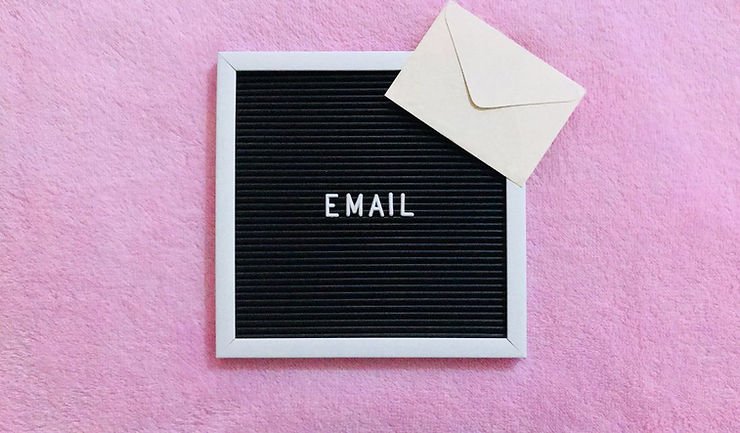Here are 7 top ideas for your email marketing campaign:
1. Abandoned Cart Emails: How to Win Back Customers and Increase Sales
As an e-commerce business owner, you know that one of the biggest challenges is getting customers to complete their purchases. According to recent research, the average cart abandonment rate for online retailers is over 75%. This means that three out of four customers who add items to their cart never make it to the checkout page. However, all is not lost. Abandoned cart emails can be a powerful tool to win back customers and increase sales. In this post, we’ll take a closer look at how abandoned cart emails work, why they’re effective, and how you can create a successful campaign.
What Are Abandoned Cart Emails?
Abandoned cart emails are automated emails that are triggered when a customer adds products to their cart but doesn’t complete the purchase. These emails are designed to remind the customer of what they left behind and encourage them to come back and complete the sale. Typically, an abandoned cart email will include a message reminding the customer of the items they left in their cart, as well as a call to action (such as a button or link) to return to the site and complete the purchase. Some businesses also include a discount code or other incentive to sweeten the deal and encourage the customer to complete the sale.
Remind Customers of What They Left Behind
Sometimes, customers simply forget about the items they added to their cart. An abandoned cart email can serve as a helpful reminder and prompt the customer to return to the site and complete the purchase.
Create A Sense of Urgency
By reminding the customer that the items in their cart are still available, an abandoned cart email can create a sense of urgency and encourage the customer to act quickly before the items sell out or the discount code expires.
Provide A Personalized Shopping Experience
Abandoned cart emails can be customized to include the specific items the customer left behind, as well as other personalized details such as their name and any other information you have collected about them. This can create a more personalized and engaging experience for the customer.
How To Create A Successful Abandoned Cart Email Campaign
Now that we’ve discussed why abandoned cart emails are effective, let’s take a look at how you can create a successful campaign for your e-commerce business.
Choose The Right Timing
It’s important to send abandoned cart emails at the right time to maximize their effectiveness. In general, it’s best to send the first email within an hour or two of the cart being abandoned, as this is when the customer is most likely to still be considering their purchase. You can then follow up with additional emails over the next few days if the customer still hasn’t completed the purchase.
Craft A Compelling Message
Your abandoned cart email should be well-crafted and engaging, with a clear message that reminds the customer of what they left behind and encourages them to complete the purchase. Consider using eye-catching visuals, persuasive language, and a clear call to action to encourage the customer to return to the site and complete the sale.
Include A Discount Code Or Other Incentive
Offering a discount code or other incentive can be a powerful way to encourage customers to complete their purchases. Consider offering a percentage off the total purchase price or free shipping to sweeten the deal and make the customer more likely to return to the site and complete the sale.
Test And Refine Your Campaign
As with any marketing campaign, it’s important to test and refine your abandoned cart email campaign over time to maximize its effectiveness. You may want to experiment with different subject lines, messaging, and incentives to see what works best for your audience.
Use Segmentation And Personalization
To make your abandoned cart emails even more effective, consider using segmentation and personalization to create a more tailored experience for the customer. For example, you could send different emails to customers who abandoned carts with high-value items versus those with lower-value items, or include recommendations for related products based on the customer’s browsing history.
Follow Up With Additional Emails

If the customer still hasn’t completed their purchase after the first abandoned cart email, consider sending a series of follow-up emails over the next few days. These emails can include additional incentives or messaging to encourage the customer to complete their purchase. Abandoned cart emails can be a powerful tool to win back customers and increase sales for your e-commerce business. By reminding customers of what they left behind, creating a sense of urgency, and providing a personalized shopping experience, abandoned cart emails can be an effective way to encourage customers to complete their purchases.
To create a successful abandoned cart email campaign, it’s important to choose the right timing, craft a compelling message, include a discount code or other incentive, test and refine your campaign, use segmentation and personalization, and follow up with additional emails as needed. Implementing these best practices and experimenting with different approaches can create a successful abandoned cart email campaign that drives more sales and engagement for your e-commerce business.
2. Welcome Emails: How to Make a Great First Impression and Drive Sales
As an e-commerce business owner, you know that making a great first impression is key to building a loyal customer base. One effective way to do this is through a well-crafted welcome email. In this post, we’ll take a closer look at how welcome emails work, why they’re effective, and how you can create a successful campaign.
What Are Welcome Emails?
Welcome emails are automated emails that are sent to new subscribers who have recently signed up for your e-commerce business’s email list. These emails are designed to introduce your brand, set the tone for a positive customer relationship, and encourage new subscribers to make their first purchase. Typically, a welcome email will include a message thanking the customer for signing up, as well as information about your brand, your products or services, and any special offers or incentives that you’re currently offering.
How To Create A Successful Welcome Email Campaign
In addition to introducing your brand and offering incentives, it’s important to provide valuable information in your welcome email. This could include information about your products or services, helpful tips or advice related to your industry, or other relevant content that will be of interest to your subscribers. To make your welcome email even more effective, consider personalizing the message based on the subscriber’s interests or behavior. For example, you could include product recommendations based on the subscriber’s browsing history or demographic information, or tailor the messaging to align with their interests or preferences. As with any marketing campaign, it’s important to test and refine your welcome email campaign over time to maximize its effectiveness. Monitor the open and click-through rates of your emails and make adjustments as needed based on the results.
Welcome emails can be a powerful tool to make a great first impression and drive sales for your e-commerce business. By welcoming new subscribers to your brand, providing valuable information and offers, and personalizing the message, you can create a positive customer relationship and encourage subscribers to make their first purchase. To create a successful welcome email campaign, it’s important to choose the right timing, craft a compelling message, include a special offer or incentive, provide valuable information, personalize your message, and test and refine your campaign over time. By following these best practices and experimenting with different approaches, you can create a successful welcome email campaign that drives more sales and engagement for your e-commerce business. Remember, the key to a successful welcome email campaign is to provide value to your subscribers and make a positive first impression. By doing so, you can build a loyal customer base and drive sales over time.
3. Cross-Selling and Upselling Emails: How to Increase Sales and Improve Customer Engagement
Cross-selling and upselling emails are automated emails that are triggered when a customer makes a purchase or adds items to their cart. These emails are designed to recommend related or complementary products based on the customer’s purchase history or browsing behavior.
Cross-selling emails typically recommend related products that the customer may be interested in based on their purchase history or browsing behavior. For example, if a customer purchases a pair of shoes, a cross-selling email might recommend a matching handbag or accessories.

Upselling emails, on the other hand, recommend higher-end or more expensive versions of products that the customer has already shown an interest in. For example, if a customer is browsing laptops, an upselling email might recommend a higher-end model with more features. There are several reasons why cross-selling and upselling emails can be so effective:
They Provide A Personalized Shopping Experience
By recommending products based on the customer’s purchase history or browsing behavior, cross-selling and upselling emails can create a more personalized and engaging shopping experience.
They Increase The Average Order Value
By recommending additional products or higher-end versions of products, cross-selling and upselling emails can help to increase the average order value and drive more sales.
They Can Improve Customer Satisfaction
By recommending products that are relevant and useful to the customer, cross-selling and upselling emails can improve customer satisfaction and create a positive customer experience.
How To Create A Successful Cross-Selling And Upselling Email Campaign
To make your cross-selling and upselling emails even more effective, consider segmenting your audience based on their purchase history or browsing behavior. For example, you could send different emails to customers who have purchased certain types of products or who have shown an interest in certain categories. Your cross-selling and upselling email should be well-crafted and engaging, with a clear message that recommends related or complementary products based on the customer’s purchase history or browsing behavior. Consider using eye-catching visuals, persuasive language, and a clear call to action to encourage the customer to make an additional purchase. Offering incentives such as discounts or free shipping can be a powerful way to encourage customers to make an additional purchase. Consider offering a discount code or free shipping on the recommended products to sweeten the deal and make the customer more likely to take action. As with any marketing campaign, it’s important to test and refine your cross-selling and upselling email campaign over time to maximize its effectiveness.
While cross-selling and upselling emails can be effective, it’s important not to overdo it. Bombarding customers with too many recommendations or too many emails can be overwhelming and may ultimately drive them away. Be strategic and thoughtful in your recommendations, and consider limiting the frequency of these emails to once per week or less.

Cross-selling and upselling emails can be powerful tools to increase sales and improve customer engagement for your e-commerce business. By providing a personalized shopping experience, increasing the average order value, and improving customer satisfaction, these emails can help to drive more sales and build a loyal customer base. To create a successful cross-selling and upselling email campaign, it’s important to choose the right timing, segment your audience, craft a compelling message, offer incentives, test and refine your campaign, and be strategic in your recommendations. By following these best practices and experimenting with different approaches, you can create a successful cross-selling and upselling email campaign that drives more sales and engagement for your e-commerce business.
4. Loyalty Program Emails: How to Keep Customers Engaged and Drive Sales
Loyalty programs are a great way to incentivize customer loyalty and drive sales for your e-commerce business. However, to be effective, loyalty programs require ongoing engagement and communication with your customers. One effective way to do this is through loyalty program emails. In this post, we’ll take a closer look at how loyalty program emails work, why they’re effective, and how you can create a successful campaign.
Loyalty program emails are automated emails that are sent to customers who are enrolled in your loyalty program. These emails are designed to keep customers engaged with your brand and motivate them to take action, such as making a purchase or referring a friend. Typically, a loyalty program email will include information about the customer’s rewards status, as well as information about how they can earn or redeem rewards. The email may also include incentives or promotions to encourage the customer to take action. There are several reasons why loyalty program emails can be so effective such as; Sending loyalty program emails, offering incentives such as discounts or free shipping, and motivating customers to make a purchase.
Successful Loyalty Program Email Campaign
To make your loyalty program emails even more effective, consider segmenting your audience based on their level of engagement with your loyalty program. For example, you could send different emails to customers who are close to earning a reward versus those who haven’t engaged with your loyalty program in a while. In offering incentives, it’s important to provide helpful information in your loyalty program email. This could include information about new products or services, customer reviews or testimonials, or other relevant information that may help to motivate the customer to take action.
As with any marketing campaign, it’s important to test and refine your loyalty program email campaign over time to maximize its effectiveness. Loyalty program emails can be a powerful tool to keep customers engaged and drive sales for your e-commerce business. By keeping customers informed about their rewards status, offering incentives, providing helpful information, and testing and refining your campaign over time, you can create a successful loyalty program email campaign that motivates customers to take action and build long-term loyalty to your brand.
5. Product Launch Emails: How to Generate Buzz and Drive Sales for Your New Products
Launching a new product is an exciting time for any e-commerce business. However, getting the word out and generating buzz can be a challenge. One effective way to do this is through a well-crafted product launch email campaign. In this post, we’ll take a closer look at how product launch emails work, why they’re effective, and how you can create a successful campaign. Product launch emails are automated emails that are sent to your e-commerce business’s email list to announce the launch of a new product. These emails are designed to generate excitement and interest in the new product and encourage subscribers to make a purchase. It will include a message introducing the new product, as well as information about its features, benefits, and availability. The email may also include visuals such as photos or videos of the product and a call to action (such as a button or link) to visit the site and make a purchase. There are several reasons why product launch emails can be so effective:
They Create Excitement And Anticipation
By announcing the launch of a new product, product launch emails can create excitement and anticipation among your email subscribers.
They Provide Valuable Information
By providing information about the features and benefits of the new product, product launch emails can help to educate your subscribers and build interest in the product.
They Can Drive Sales

By including a clear call to action and making it easy for subscribers to purchase the new product, product launch emails can help to drive sales and revenue for your e-commerce business. It’s important to plan your product launch email campaign well in advance to ensure that everything is in place and ready to go on launch day. This includes preparing the email content, creating visuals such as photos or videos of the product, and ensuring that your website is ready to handle an influx of traffic.
To keep the excitement and interest in the new product high, consider sending follow-up emails in the days and weeks after the launch. These emails can include additional information, customer reviews or testimonials, and reminders about any incentives or discounts that are available. As with any marketing campaign, it’s important to test and refine your product launch email campaign over time to maximize its effectiveness.
Product launch emails can be a powerful tool to generate buzz and drive sales for your new products. By creating excitement and anticipation, providing valuable information, and offering incentives, product launch emails can help to increase engagement and drive sales for your e-commerce business. To create a successful product launch email campaign, it’s important to plan ahead, segment your audience, craft a compelling message, offer incentives, follow up with additional emails, and test and refine your campaign over time. Remember to focus on creating excitement and providing value to your subscribers, and you’ll be on your way to a successful product launch.
6. Seasonal and Holiday-Themed Emails: How to Capitalize on Special Occasions and Drive Sales
As the holiday season approaches, businesses are looking for ways to capitalize on the festive mood and drive sales. One effective way to do this is by sending seasonal and holiday-themed emails. These emails can create a sense of urgency and excitement among your subscribers, encouraging them to make a purchase or take advantage of a special offer. Here are some tips on how to effectively use seasonal and holiday-themed emails in your marketing strategy:
Segment Your List
Your subscribers have different interests and needs, so make sure to segment your email list based on their preferences.
Use A Catchy Subject Line
Your subject line is the first thing your subscribers will see, so make sure it stands out. Use catchy phrases, emojis, and numbers to create a sense of urgency and encourage opens.
Incorporate Holiday-Themed Graphics
Use festive graphics and images to make your emails more visually appealing. This can include images of holiday decorations, winter landscapes, or seasonal products.
Offer Special Promotions
Encourage subscribers to take action by offering special promotions and discounts. This can include free shipping, buy-one-get-one-free offers, or limited-time sales.
Don’t Forget About Post-Holiday Emails
The holiday season may be over, but that doesn’t mean you should stop sending seasonal emails. Consider sending post-holiday emails to promote clearance sales or offer discounts on winter products. Seasonal and holiday-themed emails can be a powerful tool in your marketing strategy. By planning ahead, segmenting your list, using catchy subject lines, incorporating festive graphics, offering special promotions, and sending post-holiday emails, you can capitalize on special occasions and drive sales for your business. Personalization is key to making your subscribers feel valued and appreciated. Use their first name in the subject line and throughout the email, and consider offering personalized recommendations based on their past purchases or browsing history.
Keep Your Messaging Consistent
Make sure your messaging is consistent across all channels, including social media and your website. This will help reinforce your brand and create a cohesive experience for your customers.
Monitor Your Results
Keep track of your email metrics, including open rates, click-through rates, and conversions. Use this data to refine your approach and improve the effectiveness of your future email campaigns. By following these tips, you can create engaging and effective seasonal and holiday-themed emails that drive sales and connect with your audience on a deeper level. Whether you’re promoting holiday sales, offering gift ideas, or simply wishing your subscribers a happy holiday season, make sure your messages are well-crafted, targeted, and personalized to maximize their impact.
7. Re-engagement Emails: How to Win Back Inactive Subscribers and Improve Email Marketing ROI

As a marketer, one of the biggest challenges you face is keeping your email list engaged and responsive. While building a strong subscriber base is important, it’s equally crucial to retain those subscribers and keep them interested in your brand over time. This is where re-engagement emails come in. Re-engagement emails are automated emails that are sent to inactive subscribers on your email list to encourage them to re-engage with your brand. These emails are designed to remind subscribers about your brand and motivate them to take action, such as making a purchase or clicking on a link. Typically, a re-engagement email will include a message reminding the subscriber about your brand and offering an incentive or call to action (such as a discount code or free shipping) to encourage them to take action. Re-engagement emails are a powerful tool for winning back inactive subscribers and improving your email marketing ROI. Here’s how to do it:
Define Your Inactive Subscribers
Before you can start re-engaging your subscribers, you need to know who they are. Define your inactive subscribers based on how long it’s been since they last engaged with your emails. This could be 30 days, 60 days, or even longer, depending on your business and industry.
Craft A Compelling Subject Line
Your subject line is the first thing your inactive subscribers will see, so it needs to be compelling enough to grab their attention. Use a personal tone, ask a question, or offer a benefit to encourage openness.
Segment Your List
Segment your list based on the length of time since your inactive subscribers last engaged. This will allow you to send targeted messages that are more likely to resonate with each group.
Offer An Incentive
Encourage inactive subscribers to take action by offering an incentive, such as a discount, free shipping, or a free trial. This can help rekindle their interest in your brand and motivate them to make a purchase.
Provide A Clear Call-to-Action
Make it easy for your inactive subscribers to take action by providing a clear and prominent call-to-action in your email. This could be a button that takes them to your website or a link to a special offer page.
Keep It Short and Sweet
Keep your re-engagement emails short and to the point. Use concise language and avoid overwhelming your subscribers with too much information. By defining your inactive subscribers, crafting a compelling subject line, segmenting your list, offering an incentive, providing a clear call-to-action, keeping it short and sweet, testing and optimizing, and monitoring your results, you can create effective re-engagement campaigns that keep your subscribers engaged and interested in your brand over time.
Use A Conversational Tone
Re-engagement emails should feel like a personal conversation between you and your subscriber. Use a conversational tone and address your subscribers by name to make your messages more engaging.
Emphasize The Value
In your re-engagement emails, emphasize the value of your products or services and explain how they can benefit your subscribers. This can help rekindle their interest in your brand and encourage them to take action.
Follow Up
If your initial re-engagement email doesn’t get a response, don’t give up. Follow up with a series of reminder emails over time, using different subject lines and incentives to encourage engagement.
Consider A Win-Back Campaign
If your subscriber still doesn’t respond after several re-engagement attempts, consider a win-back campaign. This is a more aggressive approach that offers a stronger incentive to win back their business, such as a deep discount or free product.
Remove Inactive Subscribers
Finally, if all else fails, consider removing inactive subscribers from your email list. While it can be difficult to let go of subscribers, removing inactive users can help improve your email metrics and ensure that your future campaigns are more effective. Remember to focus on providing value to your subscribers and making it as easy as possible for them to re-engage with your brand, and you’ll be on your way to a successful re-engagement email campaign. Also available to read, “The Importance of Customer Retention in E-commerce“.

